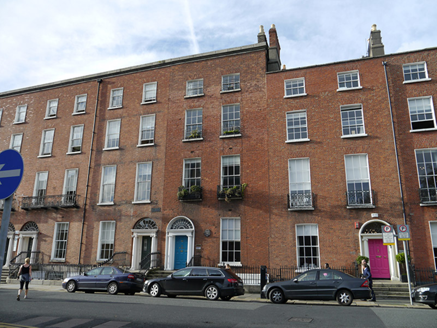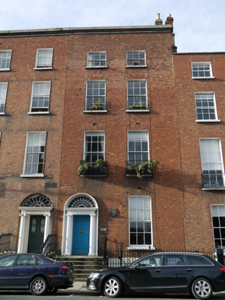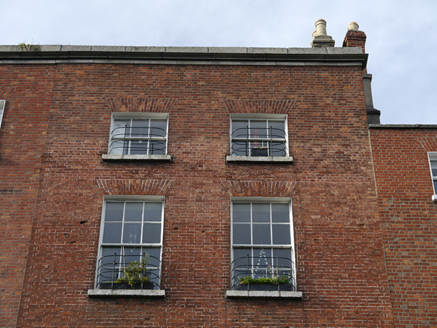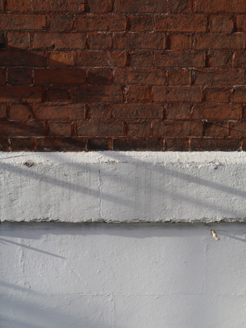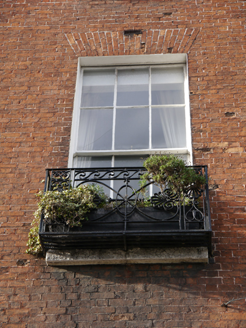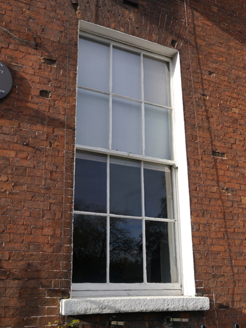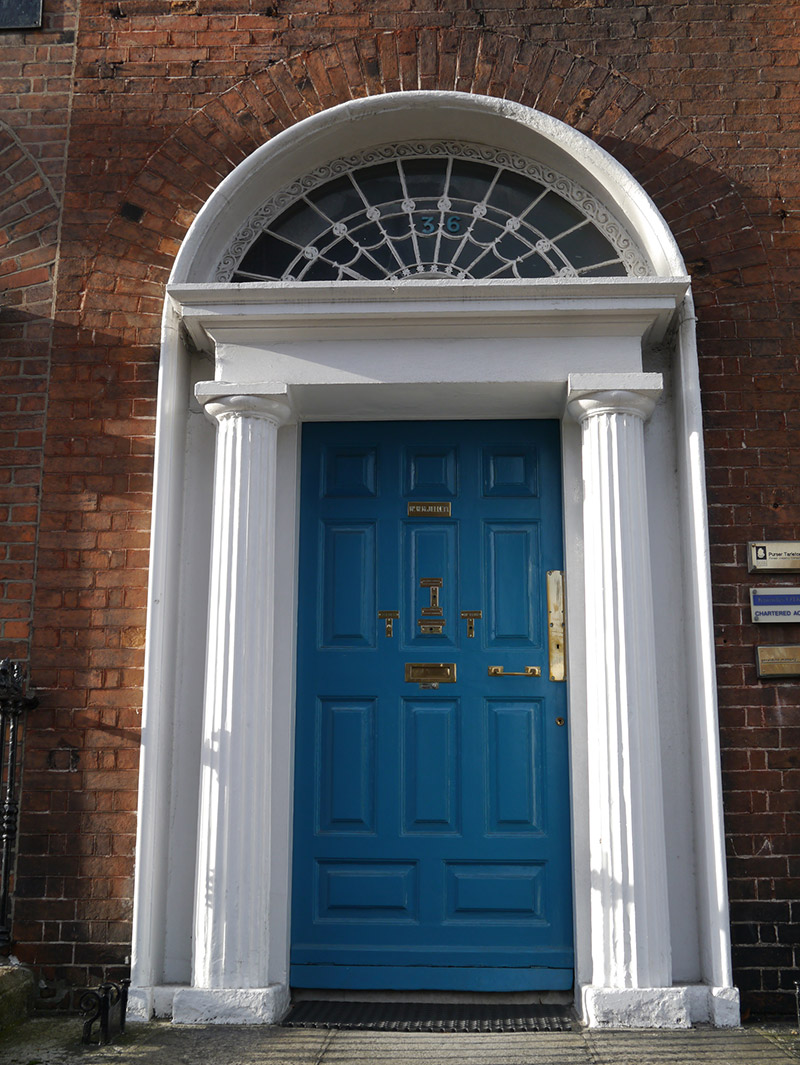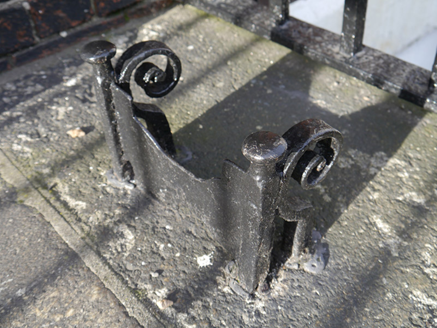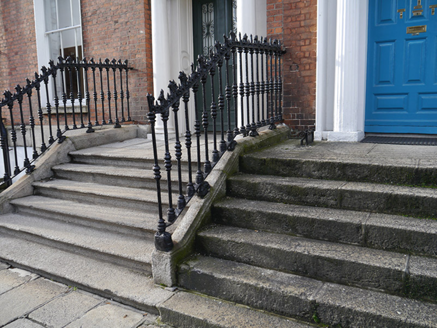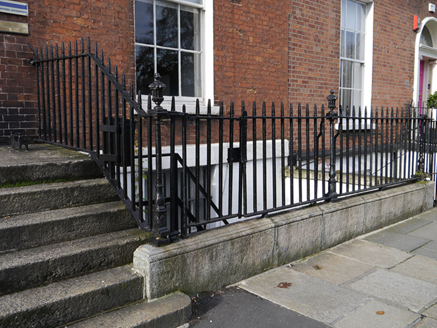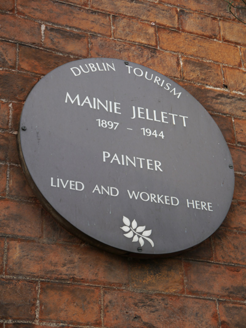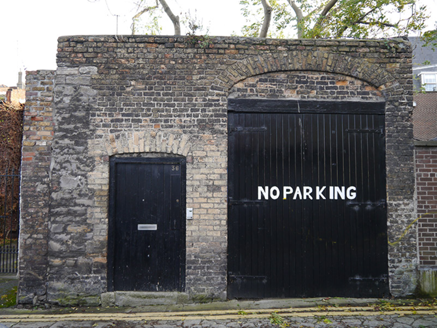Survey Data
Reg No
50930279
Rating
Regional
Categories of Special Interest
Architectural, Artistic, Historical
Original Use
House
In Use As
House
Date
1820 - 1830
Coordinates
316377, 233074
Date Recorded
11/11/2015
Date Updated
--/--/--
Description
Attached two-bay four-storey over basement townhouse, built c. 1825, with two-stage return to rear. Pitched slate roof, hipped to south, concealed by parapet with moulded granite cornice and coping. Shouldered yellow brick chimneystack to north party wall with lipped yellow clay pots. Parapet gutters. Red brick walling in Flemish bond over ruled-and-lined rendered walling to basement beneath granite stringcourse. Square-headed window openings with brick voussoirs, rendered reveals and granite sills. Wrought-iron guard rails to third and second floor window openings, decorative cast-iron balconettes to first floor and cast-iron grille affixed to sill of basement window opening. Largely six-over-six sliding timber sash windows with chamfered horns, three-over-three to third floor and eight-over-eight to basement. Round-headed door opening with moulded reveals and recessed surround containing plain frieze and moulded cornice carried on fluted Doric columns over plinth stops, with decorative cast-iron fanlight and raised-and-field timber panelled door with replacement brass furniture. Granite entrance platform with cast-iron boot scraper approached by six granite steps, flanked by iron railings with decorative cast-iron corner posts on granite plinth, enclosing basement well to north. Coal-hole cover to pavement. Modernised two-storey rubble stone mews building to rear plot and successively rebuilt rubble limestone and brown brick boundary wall to west on Laverty Court, with elliptical-headed carriage-arch and segmental-headed pedestrian opening.
Appraisal
No. 36 was the last townhouse to be constructed on the western side of the square. The majority of this side was completed between c. 1807-15. Although largely homogenous in character and form, the subtle variations between the houses are indicative of the speculative nature of the square's development. The proportions of No. 36 are more similar with those which line Pembroke Street Upper to the south of the Square. It forms part of a relatively intact imposing early nineteenth-century streetscape, positively contributing to the square's traditional character and to the wider south Georgian core of the city. Laid out in 1791 by the surveyors J & P Roe, Fitzwilliam Square was the last of the city's Georgian squares to be completed. All plots had been purchased by the end of 1791. However development was staggered, progressing slowly due to the French wars. 36 Fitzwilliam Square was the home and studio of the painter Mainie Jellett (1897-1944).
